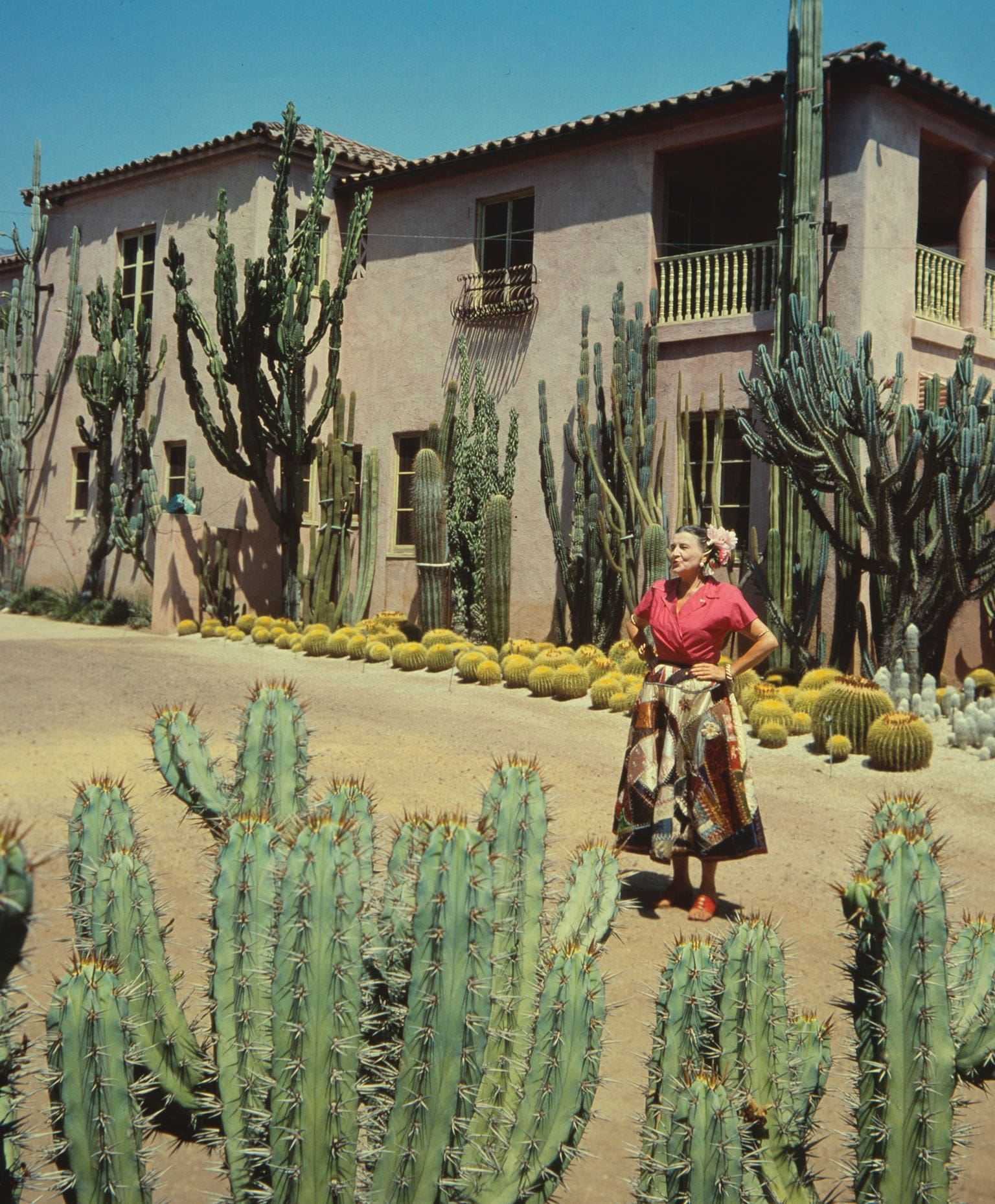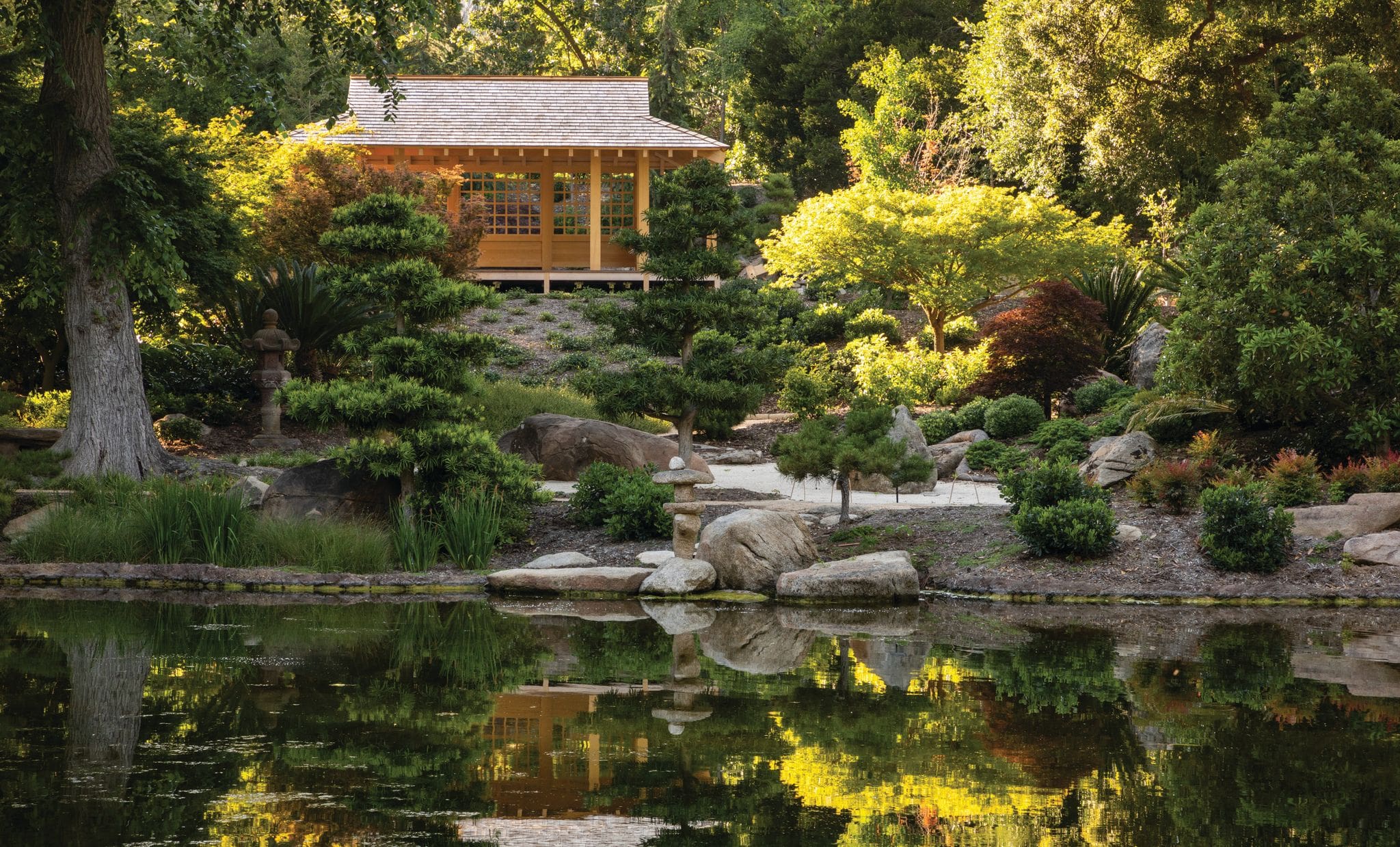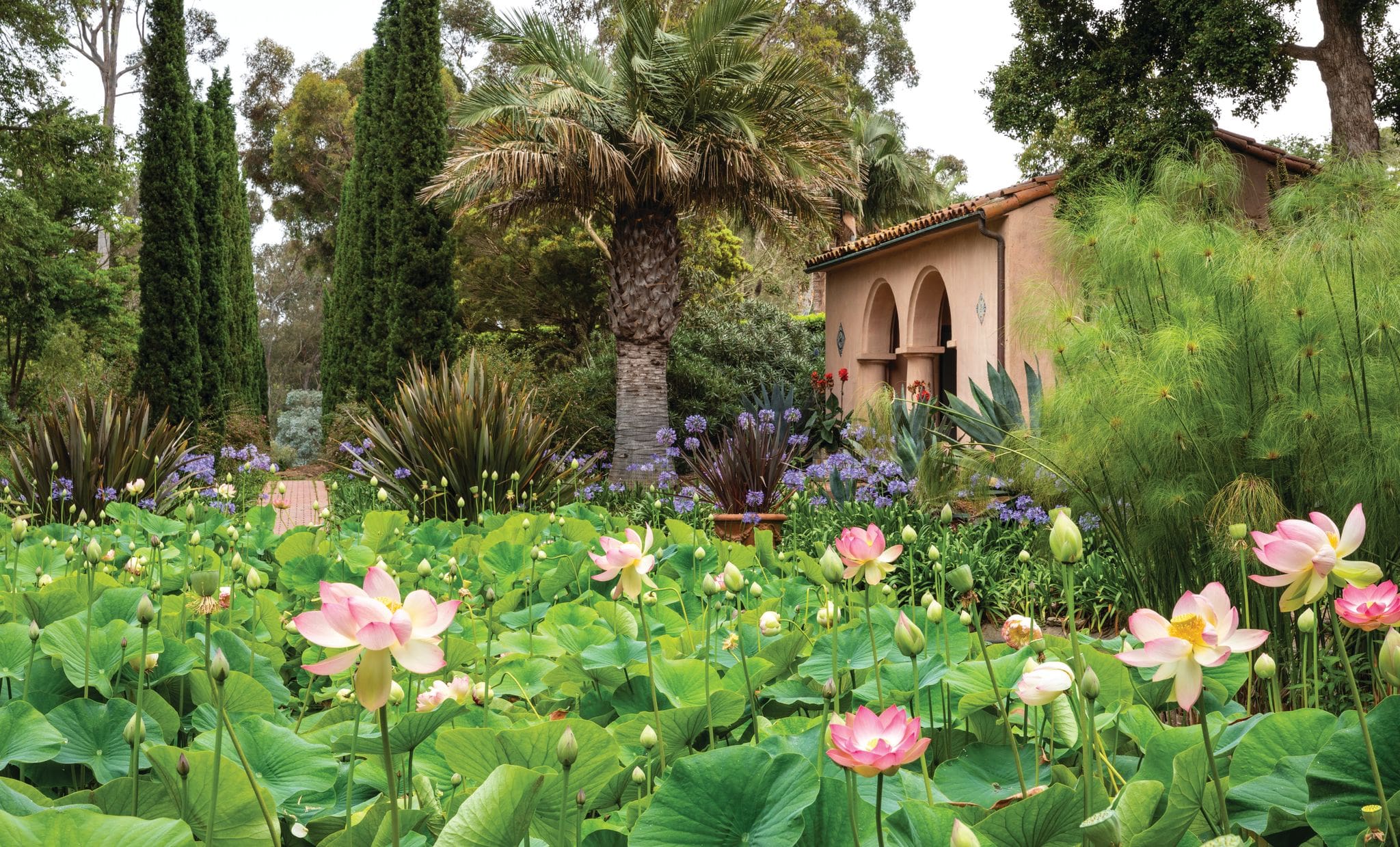To experience Lotusland is to appreciate the idiosyncratic character of its creator, Madame Ganna Walska, an aspiring opera singer whose lasting legacy turned out to be not on the stage, but in the soil. Her uniquely individual stamp is still very apparent, yet the garden that survives her has evolved and grown, as gardens do, and acquired a more complex identity. Even those of us familiar with it still struggle to define what makes it so magical. Perhaps its refusal to be easily categorized is part of the mystery.
As it has evolved as a nonprofit public garden over the past few decades since Madame Walska’s death, there has been a concerted effort toward sustainable horticultural practices and developing a sustainable business model. The botanical collections have grown and aged, however, without losing their powerful and sometimes exotic identities. There are some new additions and others have been expanded or refreshed, but the whimsy and character that were the inspiration for the original garden survive and assure Lotusland a special status as one of the most remarkable and magical places in the world.
Blue Garden
It has been said that Madame Walska was an artist who used plants as her brush and the land as her canvas. Perhaps nowhere in Lotusland is that artistic sensibility — one could call it a painterly approach — as sensitively deployed as in the Blue Garden. Defined by a palette of powdery, silvery shades that encompass a staggering array of tonalities, this inviting garden features a surprising range of grasses, cedars and palms that somehow unite to form a harmonious whole. The thought of a monochrome garden might at first seem a bit dull, for what do we think about when we think about gardens if not a vibrant array of colors? But what makes the Blue Garden — and the vogue for single-color gardens that goes back to at least the 19th century — so compelling is the richness, variety and visual excitement that can be teased out of this singular approach.
Japanese Garden
Peace, tranquility and harmony are hallmarks of the traditional Japanese garden, as is the seeming simplicity that belies the careful thought that goes into its planning and care. Covering more than 1.5 acres, the Japanese Garden at Lotusland is also the largest of its themed landscapes. Gardener Frank Fujii balanced Madame Walska’s flair for the dramatic with his penchant for simplicity, advocating a harmonious balance of plantings, stones, and other natural and manmade elements. Design principles and techniques reflect the Edo era–style strolling garden, including shakkei, where the illusion of space is manipulated to capture a distant view and make it an integral part of the immediate landscape. The sleight of hand works beautifully to create a microcosm of natural beauty. Cedars, pines and other conifers reinforce an Eastern sensibility, while Moonrise Japanese maples, Akebono cherry trees and Chinese fringe trees add texture and color that evolves throughout the year.
Lotus Garden
Mysterious, exotic and celebrated for its beauty, the lotus is among the oldest flowering plants in existence. As such, it possesses a rich history of deep social and spiritual significance in both the ancient and modern worlds. In ancient Greece, the lotus flower represented innocence, purity and modesty. In Hinduism and Buddhism, it is considered the most sacred flower and is a symbol of life, renewal and transcendence. Like most culturally meaningful plants and animals, this symbolism is rooted in actual elements of its biology. The lotus starts as a seed in the mud. It grows many rhizomes before emerging into the air and blooming, revealing a beautiful flower unmarred by the muddy waters from which it arose, and in which it is still rooted. The mud is said to symbolize the basis of life (the physical world), while the flower represents spiritual enlightenment. Its life cycle, growing out of murky waters into the air, symbolizes transcendence — another reason Madame Walska may have been drawn to the plant.
Excerpted from © Lotusland, Rizzoli New York, 2022. Images © Lisa Romerein
Read this article as it appears in the magazine.
Exploring Lotusland with Executive Director Rebecca Anderson.






